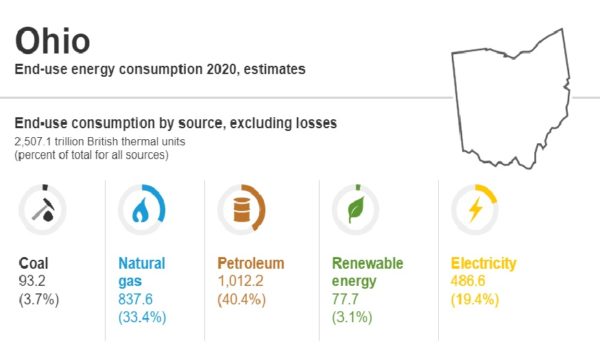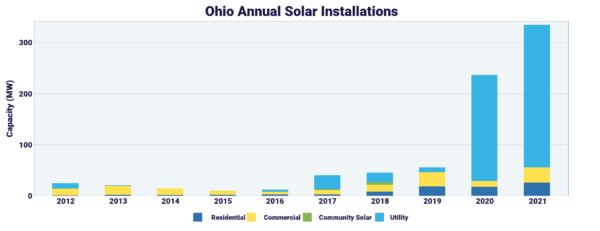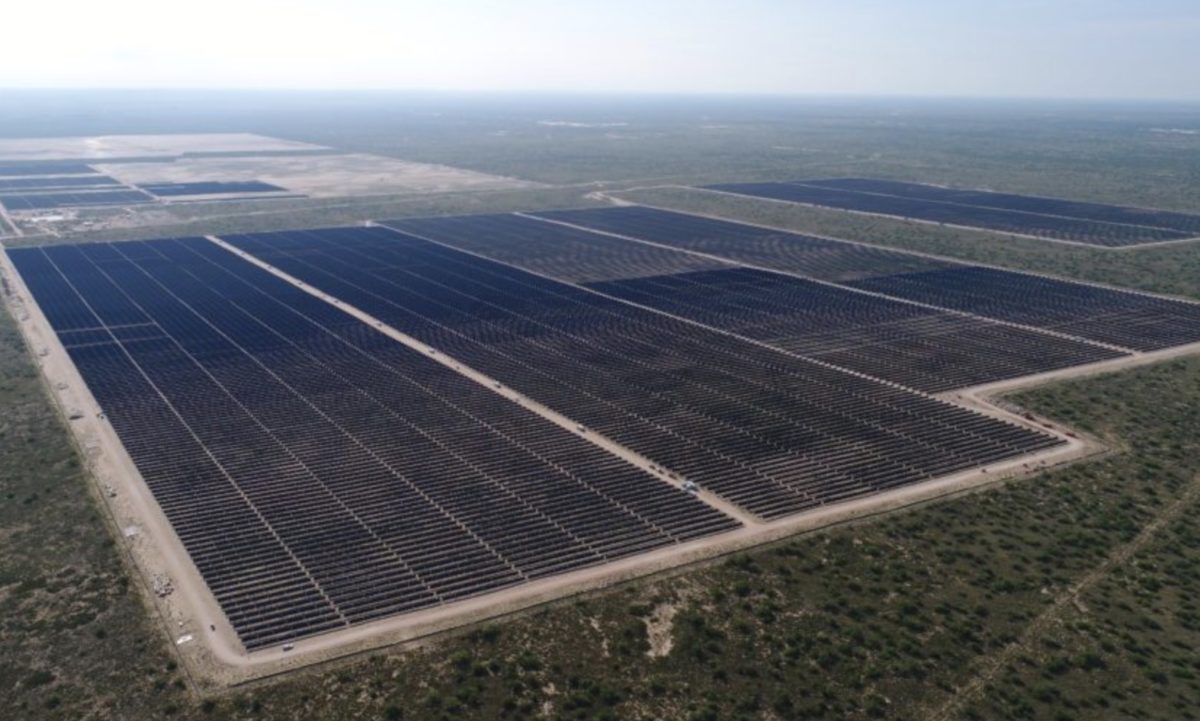The midwestern state of Ohio, nicknamed the Buckeye State, is the 34th largest by area and the seventh most populous. Ohio’s electric rates are still relatively low, currently at 9.76 cents/kWh, and petroleum and natural gas dominate the energy mix (77.8%), according to the U.S. Energy Information Administration (EIA). Solar energy did not factor much in the energy mix until 2021, when the tide turned a bit, and utility-scale and commercial installations began to dot the landscape.

Changing landscape
Ohio currently has over 916 MW of solar installed, ranking 26th in the country, according to the Solar Energy Industries Association (SEIA). Solar provides 0.9% of Ohio’s electricity, but that is expected to change, as SEIA’s projection is that nearly 8.8 GW of solar will be installed over the next five years, making Ohio one of the top five solar states in the country.
In addition to a growing solar industry, the Buckeye State is home to several manufacturers of solar products including thin-film manufacturers First Solar and Toledo Solar, racking manufacturer Applied Energy Technologies (AET), glass supplier Glasstech, and more.

Incentives
Like other Americans, Ohio residents who want to go solar can take advantage of the federal investment tax credit, plus the many potential adders offered in the Inflation Reduction Act. As far as state incentives go, the state has some catching up to do.
The state’s first net metering law was passed in 1999, according to DSIRE. At the time, the Public Utilities Commission of Ohio (PUCO) required the utilities to credit excess generation to customers at the full retail rate. However, the Ohio Supreme Court declared this illegal in 2002, and the credit was dropped to the utility’s unbundled generation rate. In 2017, PUCO amended the net metering rules, setting a maximum size limit of 120% of a customer’s average yearly usage.
The state has an alternative energy portfolio standard (AEPS) that requires 25% of the state’s annual energy supply to come from alternate energy sources, half of which must come from renewables. In 2014 the state legislature passed a bill that made Ohio the first state to freeze its renewable portfolio standard, however, that ended in 2017 and the AEPS was scaled back in 2019. The AEPS includes a solar carve-out, which states that 0.5% of the state’s electricity must come from solar by 2026.
Ohio currently does not have community solar legislation.
County opposition
In 2021 the Ohio Senate passed senate bill 52, legislation granting county commissions the power to stop new wind and solar development projects in their tracks. After passage, ten rural Ohio jurisdictions banned large “single interconnection” wind or solar facilities in unincorporated areas. Clark County, however, rejected the ban. And while there are currently no utility-scale solar or wind facilities in Clark County, the door is now open for new development opportunities. Landowners in unincorporated areas of the county can lease or sell land for solar and wind development following the ban’s rejection.
Landmark installations
Hillcrest Solar in Mt. Orab at 265 MW is the largest operational solar project in Ohio. Developed by Innergex, the plant is powered by 606,480 made-in-Ohio First Solar Series 6 thin film photovoltaic solar modules. Hillcrest came online in 2021 and produces enough electricity to power 32,648 homes. It was one of six solar installations tied to Ohio’s controversial HB 6, which passed in July, 2021, and provided a bailout for uneconomic coal and nuclear power plants.
Stay tuned because what may be the largest solar installation in the United States is before the Ohio Power Siting Board. The Oak Run solar project developed by Savion would create over 3,000 construction jobs and generate up to $504 million in tax revenue over its lifespan, 60% of which would fund local school districts. If approved, it will be installed on 6,000 acres of land in rural Madison County, and construction would begin in 2023, with commercial operations coming online in phases starting in 2025.
Up next
The last stop on the pv magazine USA tour of solar incentives was in Indiana, and next we’ll head to North Dakota.
The 5-year forecast was amended from 9.9 MW to 8.8 GW, from SEIA’s Q3 2022 data.
This content is protected by copyright and may not be reused. If you want to cooperate with us and would like to reuse some of our content, please contact: editors@pv-magazine.com.









Oak Run was already killed by the Madison County Board of Supervisors.